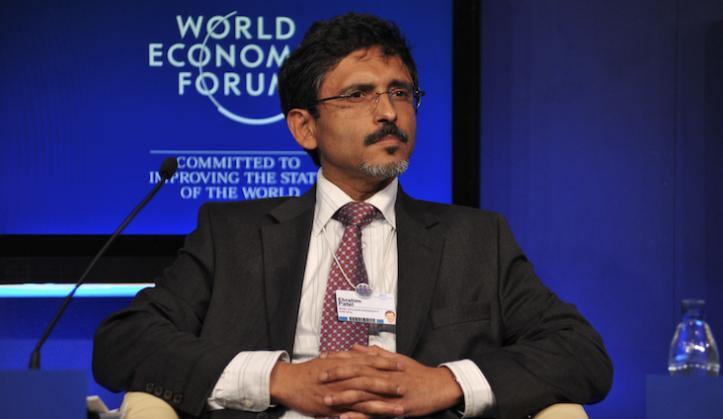Africa-Press – Lesotho. In a wide-ranging interview on the sidelines of the Intra-African Trade Fair, Patel gives The Africa Report insights about his thinking on how South African development finance institutions (DFIs) can fit into the continental trade agreement.
The minister also speaks about where opportunities lay in the agreement for his country and about his ministry’s partners in government with regards to making the AfCFTA effective.
“They [DFIs] absolutely have a role to play.
The Development Bank of Southern Africa can play a big role in infrastructure funding in South Africa to ensure that we have the platforms [and] … between countries,” says Patel, who explains that “to facilitate trade, a lot of infrastructure needs to be cross border.
You can’t have a brilliant road in one country and terrible road infrastructure in a neighbouring country. ” The Industrial Development Corporation (IDC), already an investor in the rest of the continent on projects that facilitate industrial development including ports and airports, has scope within the AfCFTA.
We are entering a period where companies must go beyond their comfort zones and enter new markets. “In the DRC [Democratic Republic of the Congo], for example, it’s [IDC] invested in a tin mine.
A lot of the capital equipment and goods come from South Africa. There are ways in which these [investments] can be structured to benefit both the countries that the IDC invests in and South Africa,” says Patel.
Patel envisages that the Export Credit Insurance Corporation (ECIC), a risk-based insurer, will be instrumental in ensuring that South African exporters venture into new markets beyond their comfort zones.
“We are focusing it [ECIC] more and more on the continent to enable South African exporters to have some risk cover. We are entering a period where companies must go beyond their comfort zones and enter new markets.
New markets come with risks … [Exporters] may well need the support of the export insurance corporation,” Patel says. Risks and rewards On the technical side of the AfCFTA, a pressing issue is customs harmonisation throughout the continent.
Patel tells The Africa Report that within the AfCFTA, all the customs authorities from the different countries throughout the region meet regularly. Nonetheless, Patel says: “It [customs harmonisation] is one of the biggest challenges that all countries will have to face.
We have potentially porous borders. You have challenges with under-invoicing, misdeclaration and ignoring rules of origin. It’s going to be a key area in future.
” His assessment is that “we are not going to overcome all the potential problems of customs administration overnight. ”
On the other side of the challenges that come with free trade lie “enormous opportunities”, according to the South African minister. “We’ve identified food processing as one important area.
South Africa is a large sugar producer on the continent. Côte D’Ivoire is a significant producer of cocoa. There are African countries that are big milk producers.
Those are three ingredients required for the production of chocolates. … we are looking at regional value chains in which each trading partner can find a niche to focus on and they seek to develop.
“Most quality chocolates, however, are not produced on the African continent but in Europe. Here’s an opportunity for us to help build … African chocolate-making through collaboration. ”
On the industrial products side, where the biggest value is added, South Africa is a significant producer of cars. “… We sell more cars [to] … Europe than in the rest of the continent. The AfCFTA is an opportunity for us to address the demand challenges on the continent. ”
Patel identified the prevalence of second-hand car imports to Africa from Asia, Europe and the Americas as the biggest dampener on demand and inhibitor to the region growing its new car market.
Furthermore, South Africa’s equipment manufacturers can provide capital goods for businesses elsewhere on the continent. The country’s “decimated” electronics sector could also benefit from the AfCFTA.
“We are rebuilding parts of it now. The … [AfCFTA] market provides a big opportunity,” Patel says.
“We also need to recognise that other African countries want to see opportunity.
For that reason, we are looking at regional value chains in which each trading partner can find a niche to focus on and they seek to develop,” he says. Patel’s partners at home
Within the South African government, Patel’s portfolio works closely with the department of international relations and co-operation “because they have the ambassadorial capability throughout the continent to enable transactions to be facilitated.
” In addition, the trade ministry collaborates with infrastructure departments and public entities.
Together, “we are working on how to ensure that the logistics challenges moving goods around are addressed,” he says. The department of agriculture is also a key collaborator.
“But the big partner for us is the private sector,” says Patel.
“[It is] our ordinary businesses in South Africa from small to large.
“At this Intra-African Trade Fair, we’ve put in some small and medium-sized businesses … [to] showcase their products.
… [We did that] to indicate it’s not only the large exporters, which can benefit from the free trade area.
I must point out, though, that our large exporters are significant employers of labour. We want them also to succeed in the larger African markets,” he tells The Africa Report.
“We’ve got to be patient and undertake this journey with all of its challenges and risks because of its [AfCFTA agreement] big opportunities,” he says.
For More News And Analysis About Lesotho Follow Africa-Press






